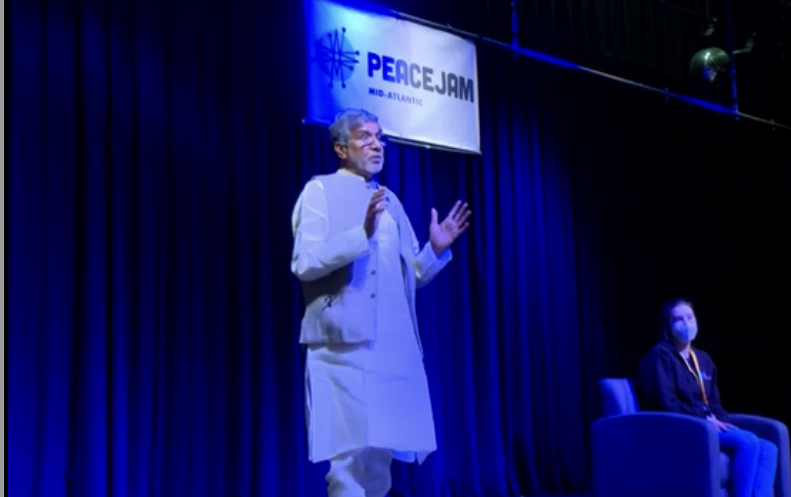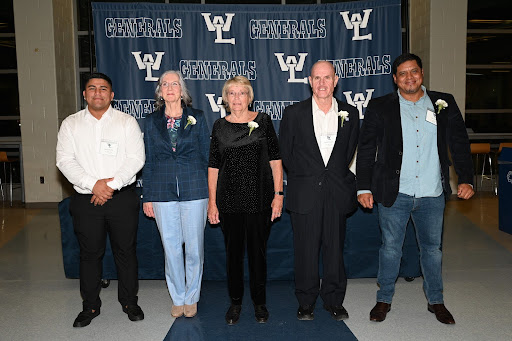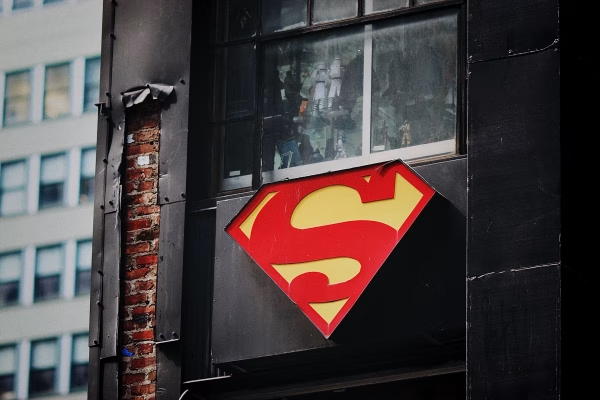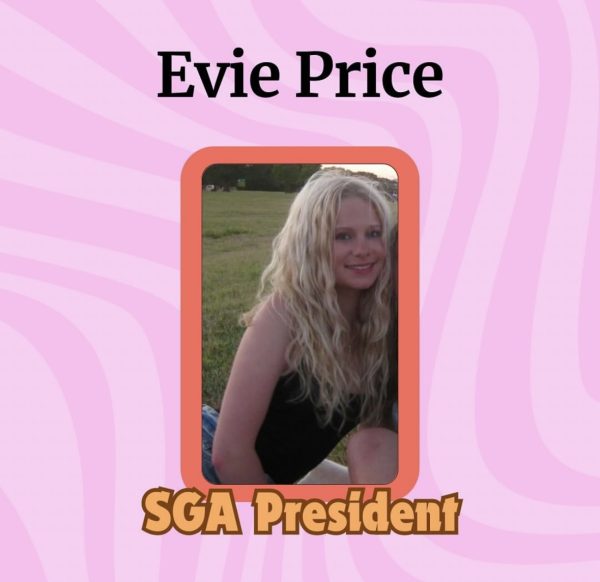Nobel Peace Laureate Talks to Students
PeaceJam Club attends MidAtlantic conference
PeaceJam Speaker
Punk rocker Ivan Suvanjieff approached young boys carrying guns in Denver, according to the Christian Science Monitor. They had joined a gang, despite their young age. Without reprimand, he aimed to have a conversation. What PeaceJam Co-Founder Suvanjieff learned from that small tête-à-tête led to the eventual creation of PeaceJam in 1996.
“I discovered that, while none of these teens knew anything about politics—or cared about politics—they had all heard about [Archbishop] Desmond Tutu and the miracle of [peace coming to] South Africa,” Suvanjieff said to the Christian Science Monitor. “That gave me the idea of putting kids together with Nobel Peace Prize winners—living examples of how anyone could work for peace, could make a difference.”
The program connects 13 Nobel Peace Prize laureates, including Archbishop Desmond Tutu, with young people in college and high school. 26 years later, with PeaceJam itself having been nominated for the Nobel Peace Prize, a PeaceJam chapter moved to the DC area. The Mid-Atlantic chapter of PeaceJam was only founded in 2020 and soon after a club was created at our school by sophomore Sophia Snider who had heard about the program from a family friend—-one of the first such clubs in the region. PeaceJam participants first learn about Nobel Peace Prize winners, also known as Nobel Peace Laureates, and then create their own service project. PeaceJam then holds a conference where students can meet a Nobel Peace Laureate in person and present their service project in a once-in-a-lifetime opportunity.
On Saturday, April 23, PeaceJam club members participated in a full-day conference in Montgomery County, which featured Nobel Peace prize winner Kailash Satyarthi. He won the Nobel Peace Prize in 2014 jointly with Malala because of his work planning raids that have saved over 83,000 children from child labor, acccording to the Nobel Prize website.
Students first learned about Satyarthi watching his documentary, the Price of Free (which is free on YouTube.) Viewers hear about the deaths of two of his colleagues and his own life-threatening injuries due to the dangerous nature of his advocacy against child labor. Even though he acknowledges the complexity of the issue—that some children work to provide necessities for their families–he still will not accept that the problem is impossible to fix.
“That is an age-old question. I have been confronted with this question for more than four, five decades,” Satyarthi said in a live interview about how to champion education access when some children need to work. “We should realize that, as I said, again, and again, that children are not responsible for their poverty. [Who is responsible] is the system…and then, here comes the collective responsibility of civil society for conscious and concerned citizens, that the government should make sure that every child should be in school.”
Sophomore Franchesca Snider, secretary of the school’s PeaceJam club, was able to attend the conference. PeaceJam has had an important impact on her.
“It is important to not only recognize issues but to act on them,” Snider said. “I was inspired by Kailash because of his determination and how willing he was to take action when needed. The sacrifices he made were unimaginable.”
The PeaceJam Mid Atlantic conference comes after years of work to bring it to the area. The director of PeaceJam Mid Atlantic, Michelle Avaroma, who is responsible for planning PeaceJam events, moved from Florida to the D.C. area to start the Mid Atlantic chapter after being involved with PeaceJam for 13 years.
“This wasn’t just a normal program [with one] year’s worth of planning,” Avaroma said. “This was actually the culmination of about three years of planning, in the sense that COVID, for the last two years, kind of disrupted our initial attempts to host this event…there was a lot of gratitude that we could finally put this together.”
The PeaceJam planning committee, made up of alumni and Avaroma, planned an event-filled day. Students met with kids from other schools in “Family Groups” (smaller collections of high schoolers), attended workshops on numerous topics—including how to have a conversation with someone you disagree with—and had the opportunity to meet directly with Satyarthi and ask questions. Not everyone got the chance to ask questions at the Q&A, but Satyarthi did not want to leave questions unanswered.
“I was surprised to see how Kailash wanted to give people his email address because not everyone’s questions were answered,” Snider said. “I thought it was cool how dedicated he was to educating people.”
Later in the day, several PeaceJam clubs in the area were able to present their service projects to Satyarthi and the other PeaceJam club members.
“One project was [from] a group of high school students from all over Montgomery County, who met weekly and their project was actually to coordinate the composting of materials at the PeaceJam conference to make sure that it was the most green conference that it could be,” Avaroma said. “What was fantastic is that they created signage and educational materials for participants to know how to properly compost and encouraged them to compost not only at this conference, but at home in their personal lives as well.”
At the conference alone, Veterans Compost, the cheaper company the students chose, received more than 100 gallons of compost from the young people. Other notable projects presented included international projects working with PeaceJam Ghana and an educational website on water scarcity with the goal of guidance. While our school’s club did not present (their project is not complete), they are working on an advocacy project around the swim unit.
After dinner, the students participated in an hour-long open mic night in front of their peers.
“I think it’s always really important to remember that sometimes people use art for advocacy and so, music and art, whether it’s painting or graffiti, can be an expression of social justice and advocacy,” Avaroma said. “We actually had the Natya club…which is a Bollywood dance club, open the evening up with a performance celebrating Indian culture [and] Indian dance.”
Then, several poems were recited by young people in spoken word poetry about issues that were very important to them, as well as important moments in their life. Additionally, college students sang a Taylor Swift song together, a standup comedy routine by a staff member was on the roster, along with other acts.
“We even had an individual who translated or performed a song through ASL translation,” Avaroma said. “That was incredible to see how the inclusion of the deaf community is something that they’re very passionate about, and I definitely think inspired a lot of young people who participated in the conference.”
Despite the impactful moments like this, plenty of goofy moments may stand out to young people even more. COVID-19 caused PeaceJam to have virtual meetings and this was the first time that many of the high school students met.
“There were plenty of funny moments,” Avaroma said. “I think students were excited to be together. There was a lot of dancing. A lot of hula hooping. I think Kailash taught and led some chants that the students really responded well to and really participated in.”
Contrary to his massive success and Nobel Peace Prize, Satyarthi was down to earth. That was not the only example of surprising characteristics about Satyarthi. Asked by a Montgomery county student why he chose to join PeaceJam in 2017, Satyarthi simply said this:
“I like peace and I like jam.”
What did you think about this story? Do you have any suggestions for improvements or other articles that you would like to see? Please use the contact form to communicate with us! (Keep all information school-appropriate)
https://docs.google.com/forms/d/e/1FAIpQLSeRYRWwLLzvs2rqwHSGdr-DQRvxhUSx9UcaXypXxnvVuCqwyA/viewform












